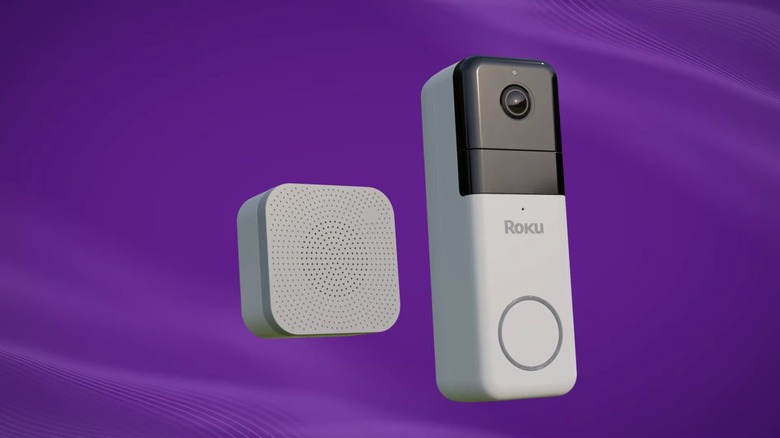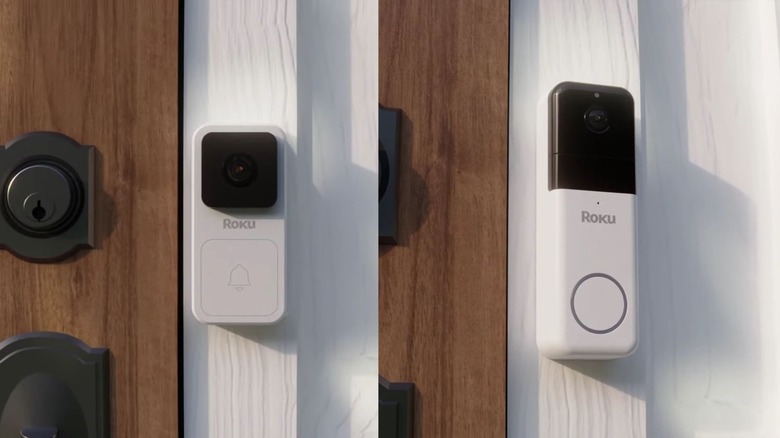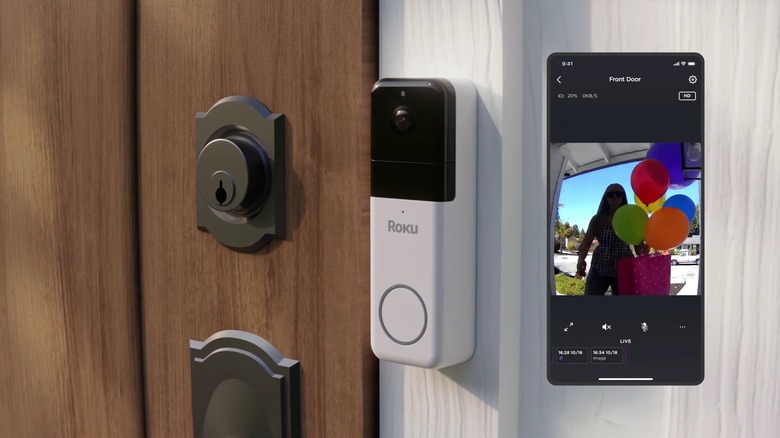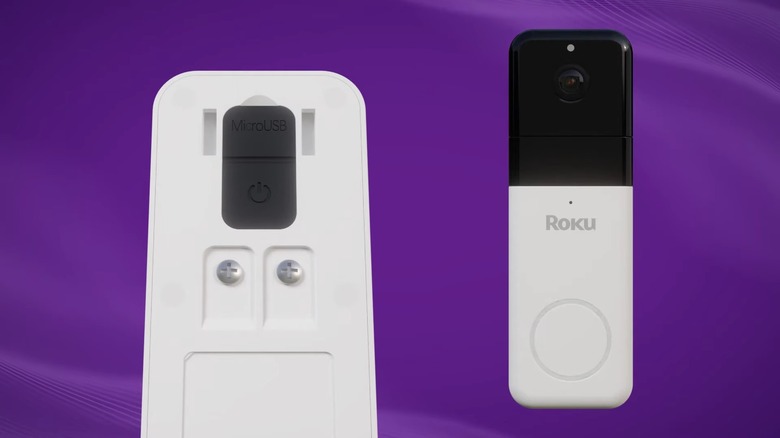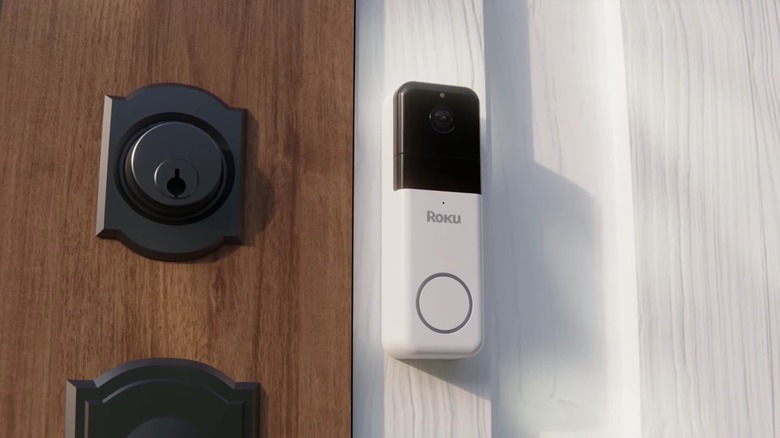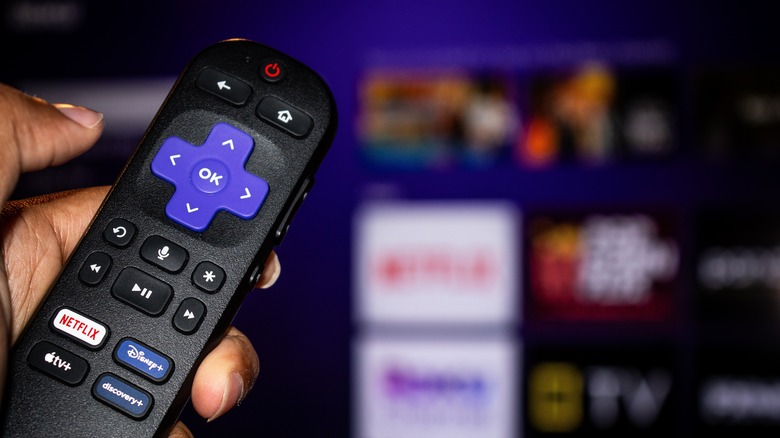5 Things To Know Before Buying A Roku Doorbell
We may receive a commission on purchases made from links.
The smart doorbell market has plenty of competition, but the relatively new Roku Doorbells have done well thanks to aggressive pricing and a Walmart retail partnership. Roku is one of the biggest brands in media hardware and streaming, but the company's foray into home security comes with the help of Wyze. While the Roku Doorbell could simply be a white-label Wyze Doorbell, Roku has added some features that could help sway potential consumers.
With Holiday sales around the corner, many consumers will want to upgrade to a better home security and doorbell system. There are plenty of reasons to get a smart doorbell, but with multiple models available from various brands, its difficult to make a choice. Even Roku offers two different doorbell models so picking one could be hard for consumers. Clarifying what each Roku doorbell offers, and the differences between both versions, could hopefully result in a well-informed decision if you're in the market for a Roku smart doorbell.
There are two versions of the Roku Doorbell
The Roku Doorbell comes in a wired and wireless version. The wired Roku Video Doorbell is excellent if a consumer already has an old, existing doorbell to replace, whereas the wireless Roku Video Doorbell comes with batteries, so power wiring is optional. Roku estimates the two 3,250 mAh batteries will last three to six months. While initial installation might be easier on the wireless version, charging batteries could be a hassle. Batteries are also non-removable, eventually requiring frequent charging as their capacity can degrade over time.
Apart from the powering methods, there are significant size differences between the two Roku Doorbells. The wired unit is smaller (1.5 x 3.3 x 0.6 inches) than the wireless one (5.5 x 1.8 x 1.1 inches), which is important to know if someone wants to embed the units in any way. The chimes are also different in size, with the wired doorbell getting the smaller version (2 x 2 x 1.4 inches) and the Roku wireless doorbell getting the larger version (2.7 x 1.6 x 2.7 inches).
A subscription is needed for all of the features
Installing a Roku Video Doorbell and Chime gives consumers a two-week free trial of the Smart Home subscription, which is a 14-day trial of cloud storage access to recorded video clips. The subscription also removes any delay between events and smart alerts. Without the paid subscription, there won't be any video clips saved by Roku's doorbell, and the users will only receive snapshots of security events and activities. There is also a cooldown period of at least five minutes between alerts without a subscription. This monetization is a standard of the smart doorbell industry; other brands like the Ring Doorbell Pro and Arlo Doorbells have paywalled features.
The Smart Home subscription unlocks smart alerts: The device sends intelligent alerts for vehicles, people, pets, and packages, making it easy to see what's happening. The base plan costs $3.99 a month, or $39.99 a year. For $9.99 a month, or $99.99 yearly, consumers can add up to a maximum of 99 cameras to the Roku network. The advanced subscription would likely be handy for companies, stores, or bigger houses.
No local storage for video recordings or alert
One thing that may be a deal breaker to some is the Roku doorbells don't record footage locally at all. Instead, the data is stored solely in the cloud. In fact, the doorbells don't even come with storage or ports to add local saving of video. Consumers can view the live feed whenever needed, but event recordings are uploaded to the cloud for later access. The uploaded 12-second video clips and stills are high resolution, and Roku stores 14 days of footage on the cloud, automatically purging older recordings.
The companion app lets users access any recorded footage from their smartphone, and a constant internet connection is needed for the bells to work optimally. Both doorbell versions support 2.4 GHz Wi-Fi connections, and the wireless doorbell additionally supports 5 GHz frequency. There is also no way to send Roku doorbell footage directly to a personal storage solution currently. Consumers must manually download footage from the cloud app to their devices to keep a backup.
Different resolutions and lenses
Roku's video doorbells have different resolutions and lenses. The Roku wired video doorbell comes with 1080p HD resolution recording, which is more than enough for casual home security. The 1080p resolution isn't bad for checking who's at the door, capturing random events, or instructing the delivery person. The more expensive wireless version supports 1440p resolution. The higher resolution output from the wireless Roku doorbell means it captures more detail, which can be useful when inspecting footage with any nuance.
The wired doorbell has a wide-angle lens with a field of view of 120 degrees vertical and 88 degrees horizontal. The aspect ratio is 4:3, which Roku advertises as a "head-to-toe" aspect ratio. The wireless version has a field of view of 150 degrees vertical and horizontal and a square aspect ratio of 1:1. The wireless Roku doorbell captures a broader view, capturing more visual information in a frame. Both doorbells also come with night vision thanks to small infrared bulbs in the camera section. Visual performance of the doorbell's cameras is good for the price, with the exception of a tiny LED light hidden inside the chassis, which it's usually not enough to illuminate a visitor fully.
Better integration with Roku devices
Unsurprisingly, the Roku doorbells gel well with other Roku products, like streaming devices and TVs. Roku's doorbells can cast a live feed to Roku-compatible TVs, and can use the company's voice command features as well. With a press of a button, consumers can see what's happening at the door right on their TV. This feature is only available on Roku devices, so consumers with other smart TVs will miss out on that feature.
The Roku doorbells support Amazon Alexa and Google Assistant voice services as well. Asking Roku to show who's at the front door can do the trick. The Roku doorbells, however, do not support Apple Homekit, and are not compatible with IFTTT — a popular home automation application.
Overall, the Roku Doorbells are a good doorbell option, available at a competitive price. Apart from features locked behind a subscription, users won't find the device particularly lacking. For consumers who already have Roku devices at home, any of the Roku doorbells should be a great, relatively inexpensive choice so long as they're okay with the added subscription cost.
